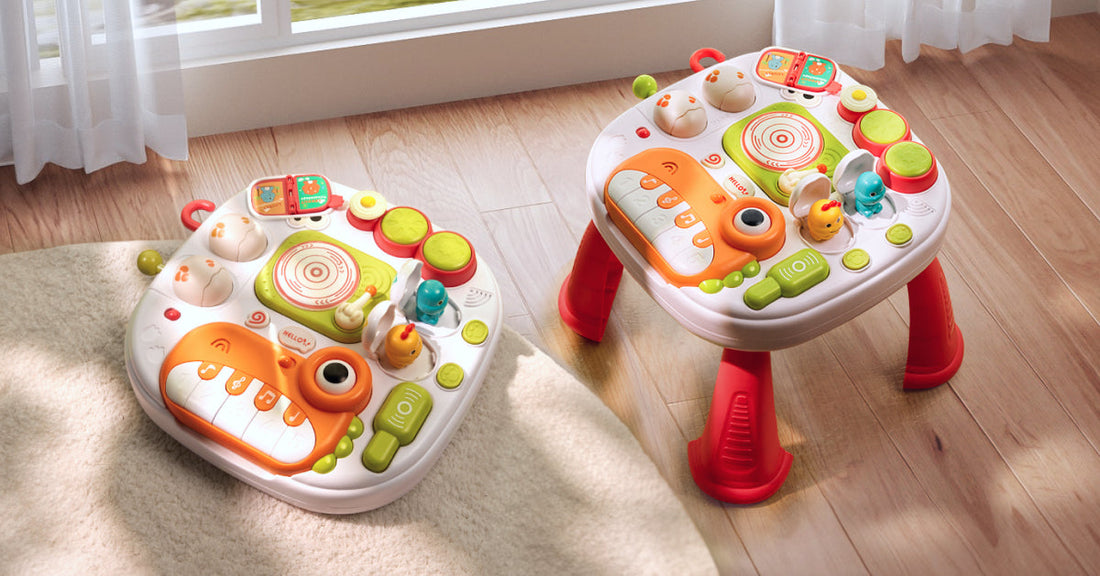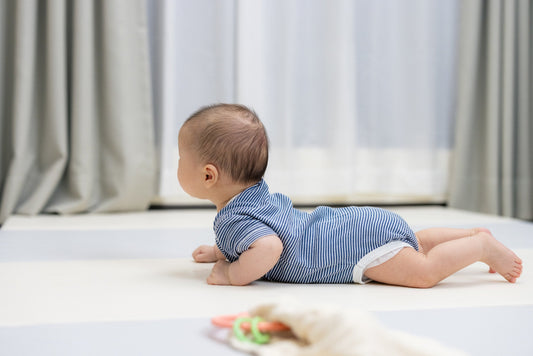木製與塑料玩具 - 普羅斯特,缺點和考慮因素

木製玩具和塑膠玩具各有優點。木製玩具以其耐用性、環保性、開放式創意玩法和無毒性而脫穎而出,但它們價格更高且選擇有限。另一方面,塑膠玩具價格實惠、種類繁多、易於清潔、互動性強,但卻對環境有影響,並有安全隱患。家長在選擇玩具時應考慮孩子的年齡、安全標準、預算、環境因素以及玩具的均衡多樣化組合,為孩子創造豐富的成長環境。
玩具在兒童早期發展中起著至關重要的作用,對認知、身體、情緒和社會成長有重大貢獻。由於玩具選擇眾多,父母常常在木製玩具和塑膠玩具之間猶豫不決。這兩種材料各有優缺點,影響因素包括安全性、耐用性、環境影響和教育價值。本文探討了父母在選擇木製玩具和塑膠玩具時應牢記的主要優點、缺點和重要考慮因素。
木製玩具
木製玩具的優點
木製玩具深受幾代人的喜愛,以其永恆的吸引力和發展益處而聞名。
1.耐用性和壽命:
木製玩具如果製作精良,往往堅固耐用。它們可以承受幼兒反覆抓握、投擲和咀嚼,且不會輕易破損或變得不安全。木製玩具通常成為傳家寶,由於其壽命長而代代相傳。
2.環保:
這些玩具通常採用可持續採伐的木材製成,可生物降解,與塑膠相比對環境的影響極小。它們通常不使用有害化學物質、油漆或黏合劑,因此對兒童和環境來說自然更安全。
3.教育效益與創造力:
木製玩具通常具有簡單、開放式的設計,以激發創造力、想像和解決問題的能力。沒有閃爍的燈光或聲音,它們可以培養更深層的專注力和創造性思維。例如,經典的積木可以刺激空間推理、手眼協調和精細運動技能。
4.安全無毒:
優質木製玩具通常不含 BPA、PVC 和鄰苯二甲酸鹽等有害物質,而廉價塑膠玩具中則常見這些物質。尋求安全、無化學物質的遊戲體驗的父母通常會選擇木製玩具來讓自己安心。
5.美學吸引力:
木製玩具具有迷人、永恆的美感,通常可以與家居裝飾完美融合。它們的中性色調和經典設計提供了視覺舒適感並有助於創造和諧的遊戲環境。
木製玩具的缺點
儘管木製玩具有很多優點,但也存在一些限制:
1.成本考慮:
由於生產成本和材料較高,優質木製玩具的價格通常比塑膠玩具高得多。對於預算緊張的家庭來說,這個價格因素可能會令人難以承受。
2.潛在的安全問題:
製造不良的木製玩具隨著時間的推移可能會碎裂或破裂,造成受傷的風險。父母必須定期檢查木製玩具,以確保其處於安全狀態。
3.多樣性和互動性有限:
木製玩具通常缺乏燈光、聲音或數位整合等電子或互動功能。有些孩子,特別是習慣互動科技的大孩子,可能很快就會對簡單的木製玩具失去興趣。
塑膠玩具
塑膠玩具的優點
塑膠玩具 由於價格便宜、功能多樣、容易買到,佔據了大多數玩具商店的主導地位。它們具有多種優勢:
1.可負擔性:
塑膠玩具通常價格低廉、隨處可見,適合各種經濟背景的家庭。這種可負擔的價格使得父母可以為孩子提供更多種類的玩具。
2.多樣性與互動性:
塑膠玩具通常包含電子元件、互動功能以及吸引兒童注意力的引人入勝的視聽體驗。這些玩具可以刺激感官發育,並在語言學習、計數和字母識別等領域提供教育價值。
3.易於清潔和維護:
塑膠玩具防潮,易於清潔、消毒和保養。這對於容易生病或過敏的幼兒以及經常在戶外或水中使用的玩具尤其有價值。
4.輕巧便攜:
塑膠玩具通常重量輕、方便攜帶,適合戶外玩耍、旅行或去公園或海灘旅行。
塑膠玩具的缺點
然而,塑膠玩具也存在一系列問題:
1.環境影響:
塑膠玩具通常含有不可再生的石化材料,因此對環境不友善。許多塑膠玩具最終被填埋,在那裡它們緩慢降解並污染生態系統。
2. 化學品暴露與安全問題:
品質較差的塑膠玩具可能含有 BPA、鄰苯二甲酸鹽、鉛或 PVC 等有害化學物質,對兒童的健康構成嚴重風險。父母在為孩子選擇塑膠玩具時必須仔細核實安全認證和合規標籤。
3.壽命縮短和耐用性問題:
塑膠玩具,尤其是品質較差的塑膠玩具,很容易破碎,產生鋒利的邊緣並造成窒息危險。壽命縮短導致了浪費的消費模式和環境破壞。
4.過度刺激和創造力下降:
高度互動的塑膠玩具可能會過度刺激兒童,降低他們進行想像和創造力遊戲的能力。孩子可能會依賴這些玩具來娛樂,從而限制他們的創造力和認知發展。
家長需要考慮的事項:做出正確的選擇
在選擇木製玩具和塑膠玩具時,父母應仔細考慮以下因素:
- 兒童的年齡和發展階段: 木製玩具能鼓勵感官探索和創意遊戲,年幼的孩子從中受益匪淺,而年齡較大的孩子可能更喜歡 互動玩具 以補充他們不斷變化的興趣。
- 安全標準和認證: 家長必須確保玩具符合國家和國際安全標準(例如 AS
TM 無論材質種類為何,均符合 F963、EN71、ISO 8124 標準。 - 預算與承受能力: 家庭應該在成本、壽命和安全之間取得平衡,優先考慮品質而不是數量。
- 環境與道德問題: 選擇可持續生產的高品質玩具有助於減少對環境的影響並支持道德製造實踐。
- 遊戲中的平衡性和多樣性: 提供木製和塑膠玩具可以提供平衡的遊戲環境,將開放式的想像遊戲與結構化的互動體驗結合。
結論
最終,木製玩具和塑膠玩具之間的選擇取決於個人的優先考慮、預算、兒童發展目標和環境考慮。木製玩具具有耐用、安全、激發創造力和環保等特點,而塑膠玩具則價格實惠、種類繁多、易於維護並具有互動功能。一種深思熟慮、平衡的方法——融合兩種類型,同時確保高安全性和道德標準——將使父母能夠為孩子創造豐富、多樣和有益的遊戲環境。







1評論